Give your dip some zip with this spicy gochujang mayo aioli that will add excitement to every dish. It’s easy to make and is the perfect dipping sauce for veggies or meat (try it with these Soy Garlic Chicken Wings), and is an amazing addition to almost any dish. It’s also a great spread for a gochujang aioli sandwich or wrap.

I have been in love with my lemony dill aioli since I first made it years ago. But I might just have a new aioli amore with this spicy sweet gochujang aioli dip. Holey moley, this is some aioli! This is a recipe every home chef needs.
This spicy gochujang aioli is easy to make and is a versatile sauce with a creamy texture and a flavor that’s spicy and sweet and goes with virtually anything. I especially love pairing it with a variety of Asian-Inspired dishes, but it’s also great with chicken or fish.
You’ll be going back for this amazing aioli again and again, which is why I recommend making a double batch!
Jump to:
Why you'll love this recipe
- It’s a versatile dipping sauce that’s spicy and goes with virtually anything, but especially well with Asian-Inspired dishes
- The level of spice can be adjusted to individual taste preferences
- This "spicy mayo" is a great sauce for sandwiches, wraps, Poke bowls, or just for dipping wings or veggies
What is gochujang paste?
Korean gochujang paste is a fermented condiment popular in Korean cooking known for its combination of sweet, savory, and spicy notes. It is made using red chili powder known as gochugaru, rice powder, fermented soybeans, and salt.
This Korean red chili paste has been a key ingredient in Korean cooking for hundreds of years flavoring a variety of recipes and dishes. Its popularity spread abundantly since becoming a commercially made and available condiment in the 1970s.
You can usually find gochujang paste in the refrigerated department of large supermarkets or on Amazon. If your local store doesn't carry it, you can Google "Asian grocery store near me".
Ingredient notes
This recipe only calls for a handful of simple ingredients. Most of them, except the gochujang paste, you probably have in your kitchen now.

-
Mayonnaise - I like to use Kewpie brand mayo, but you can use your favorite
-
Plain Greek yogurt - use full fat for the best results. Skyr will also work
-
Fresh garlic cloves - don't swap them for dried garlic powder
-
Honey or maple syrup - to add a little sweetness to the spice
Substitutions & alterations
- The quantity of Gochujang in this recipe can be adjusted to suit your personal tastes. I find 1 tablespoon to be just enough, but for spicier aioli, go with 2 or more tablespoons.
- If you don't have rice vinegar on hand, white wine vinegar or lime juice will also work.
- I like the combination of Kewpie mayonnaise and Greek yogurt to lighten and thin out the aioli a little. However, for a richer and thicker aioli, skip the yogurt and use ¼ cup of additional mayo.
- This gochujang aioli can easily be made vegan by using a dairy-free yogurt and vegan mayo and swapping the honey for the maple syrup or agave.
How to make Gochujang aioli
- STEP 1: Crush or mince garlic and place in a small bowl. Pour 2 teaspoons of rice vinegar over the garlic and let sit for at least 7 minutes (Image 1).
- STEP 2: Place the garlic vinegar mixture on a small strainer over another small mixing bowl and press with the back of a spoon, scraping as you go (Image 2). All of the infused vinegar and some of the strained garlic should make it to the bowl. Discard whatever garlic is left on the sieve.
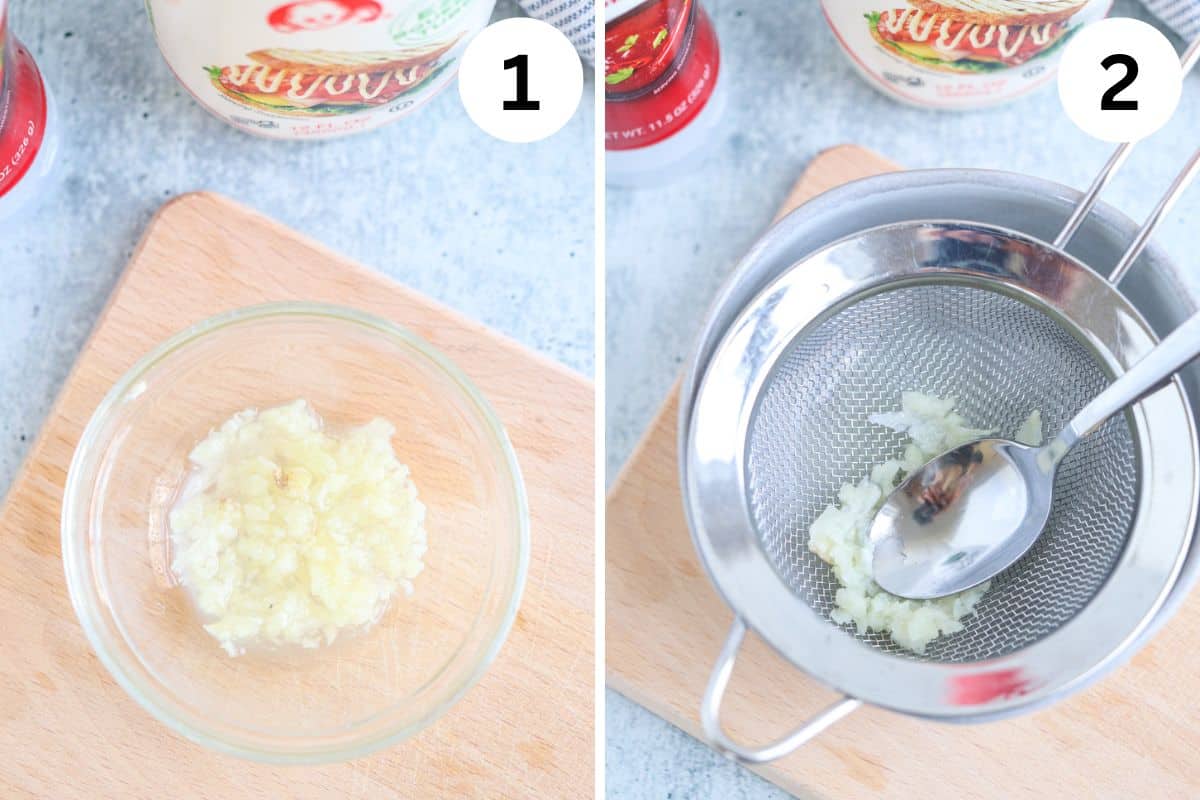
- STEP 3: To the bowl with garlic infused vinegar combine mayonnaise, Greek yogurt or skyr, Gochujang paste and honey or maple syrup (Image 3).
- STEP 4: Mix with a small whisk to combine mayonnaise and other ingredients until smooth (Image 4).
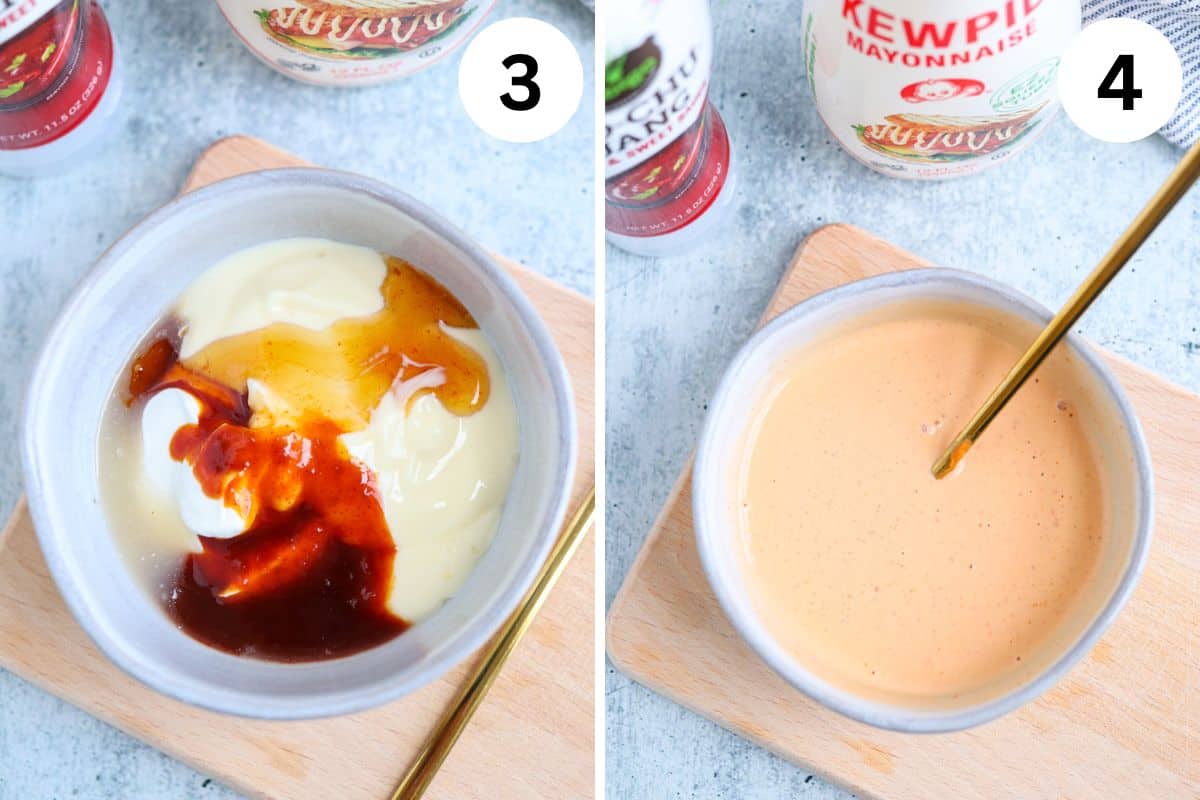
- STEP 5: Serve as a dipping sauce or drizzled over fish, tofu, salads etc. Store remaining sauce in an air-tight container per instructions below.
How to store leftover aioli
Store your gochujang aioli in an airtight container for up to a week. Use an appropriate size container. The container shouldn't have an excess of space for air to accumulate and the aioli should fill as much of the container as possible. This will help prevent oxidation and keep it fresh longer.
How to serve Gochujang mayo
- As a dipping sauce for fries - regular potato french fries, sweet potato fries, my butternut squash fries or these air fried carrot fries. Also, with air fried potato slices
- With roasted or air fried veggies like brussels sprouts or broccoli
- As a spicy dip for fresh vegetable sticks
- Serve it with chicken, especially as a dipping sauce for chicken wings or chicken nuggets
- Fish - try it in this salmon buddha bowl
- On Poke Bowls or other Asian-inspired bowls. A few of my favorites are shrimp poke bowl, quinoa poke bowl, tofu egg roll in a bowl
- As spicy salad dressing - especially with cabbage-based salads
- In tacos, such as shrimp tacos
- As a sandwich spread or in wraps - I love it on this Ham & Cheese Wrap or in this BLAT Sandwich (Bacon Lettuce Avocado Tomato).
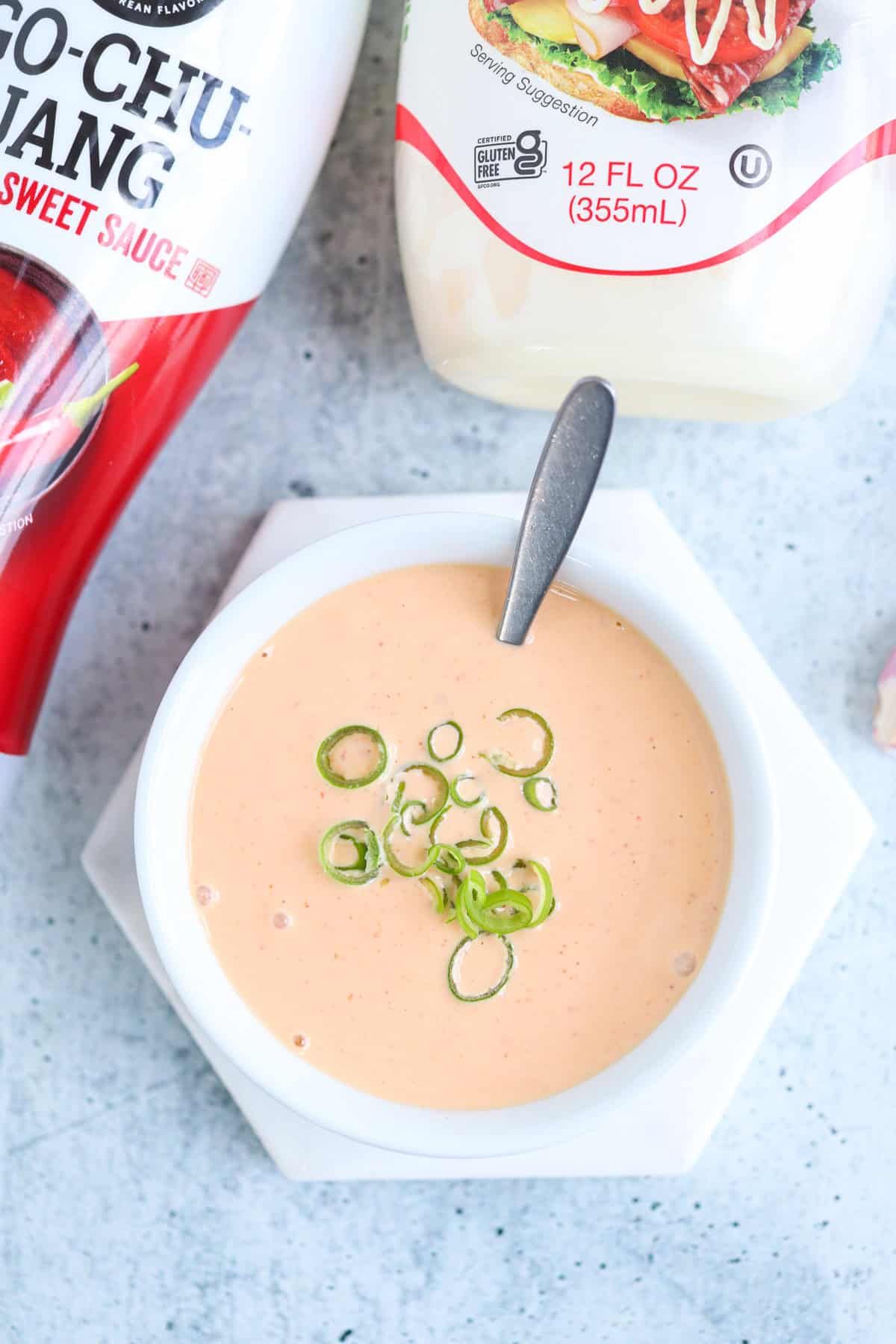
Tips & Tricks
- If you are short of time, you can skip steps 1 and 2 and mix finely minced garlic and vinegar with other ingredients directly. The texture won't be as smooth and silky but the flavor will still be great.
- You can use this same recipe to make a Sriracha aioli, just swap the Gochujang paste for Sriracha.
- Adjust the amount of gochujang to suit your personal taste preference.
Recipe FAQs
Gochujang Korean chili paste paste is a fermented condiment popular in Korean cooking known for its combination of sweet, savory, and spicy notes.
Aioli resembles mayonnaise but they are definitely not the same. Both creamy condiments are made with emulsified egg yolks, although some variations of aioli use no egg at all and have a more pasty texture. The main difference is that aioli is traditionally made with olive oil, lemon juice, and garlic, while mayo uses neutral tasting oil and vinegar. “Aioli” literally means “garlic and oil”.
Korean gochujang chili paste can usually be found in the refrigerator section of your local grocer. You can also Google “Asian markets near me” if your local supermarket doesn’t carry any. Kewpie mayo is a Japanese style mayo with a blend of vinegars. Check the condiment aisle of your supermarket to see if they carry it.
This gochujang aioli can easily be made vegan by using a dairy-free yogurt and egg yolk-free mayo and swapping the honey for the maple syrup or agave syrup.
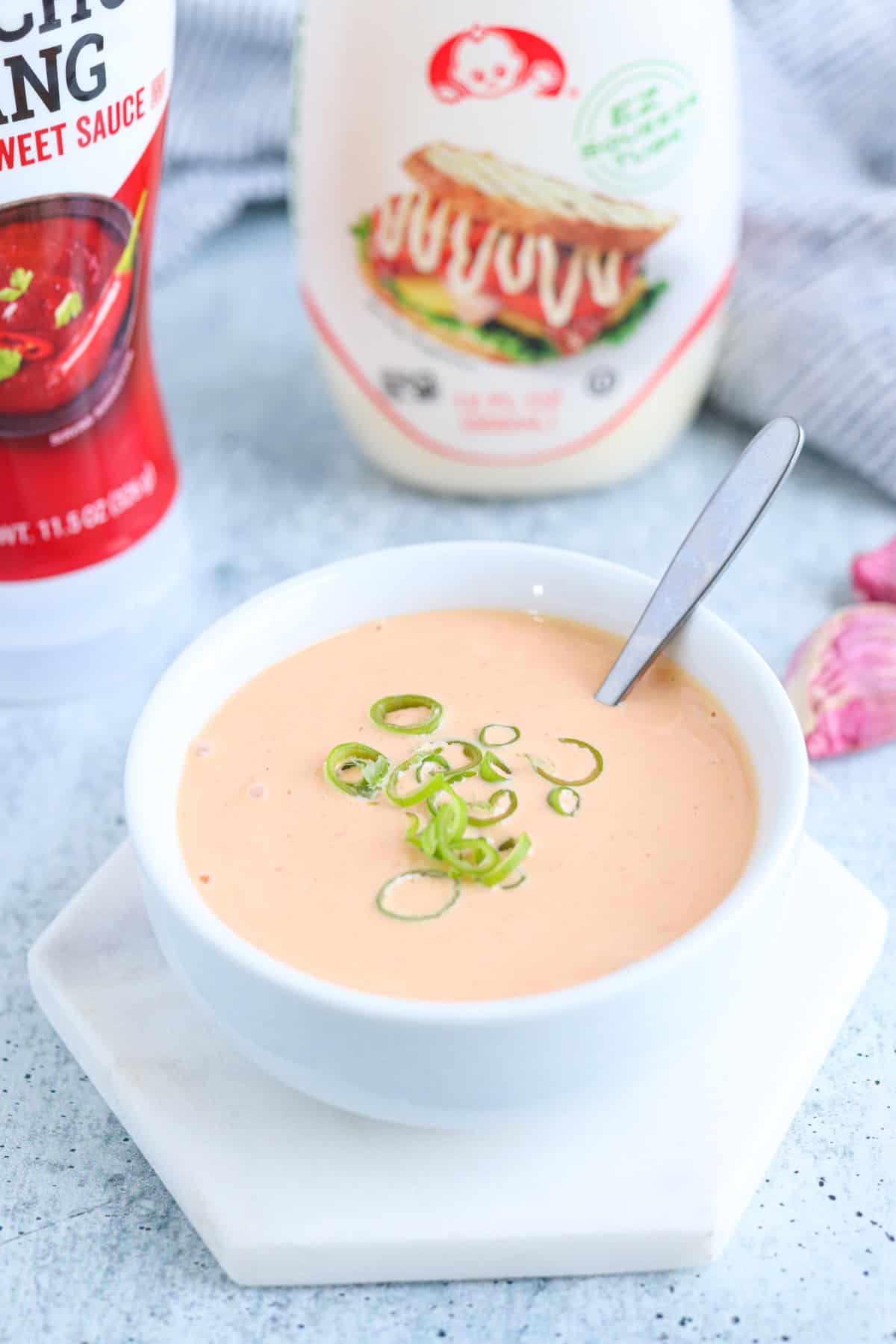
More Homemade Sauces and Salad Dressing Recipes
This post contains affiliate links.
Recipe

Gochujang Aioli
Ingredients
- ⅓ cup Kewpie mayo or your favorite mayonnaise
- ¼ cup plain Greek yogurt full fat
- 1 tablespoon Gochujang paste or more, if desired
- 1 garlic clove
- 2 teaspoon rice vinegar
- 1 teaspoon honey or maple syrup
Instructions
- Crush or mince garlic andplace in a small bowl. Pour 2 teaspoons of rice vinegar over the garlic and letsit for at least 7 minutes.
- Place the garlic vinegarmixture on a small strainer over another small bowl and press with a back of aspoon, scraping as you go. All of the infused vinegar and some of the strainedgarlic should make it to the bowl. Discard whatever garlic is left on the sieve.
- To the bowl with garlic infused vinegar add Kewpie mayo, Greek yogurt or skyr, Gochujang pasteand honey (or maple syrup).
- Mix with a small whisk until smooth.
- Serve as a dipping sauceor drizzled over fish, tofu, salads etc.


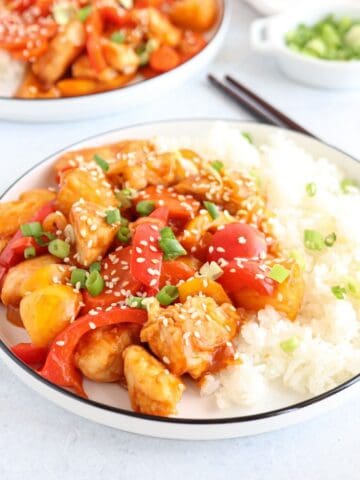
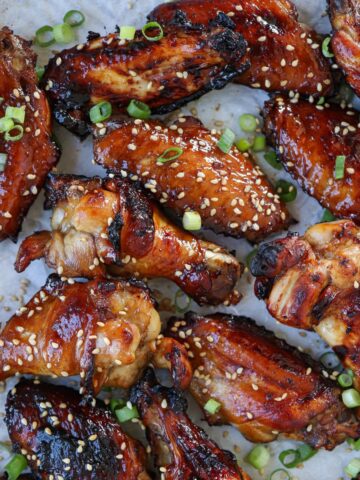
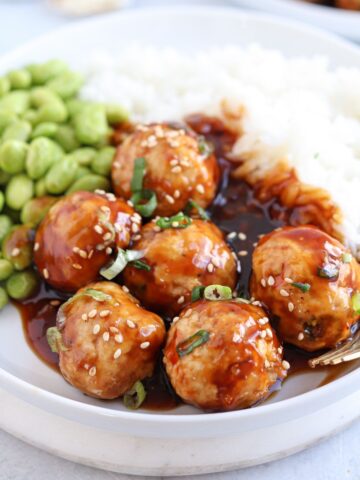
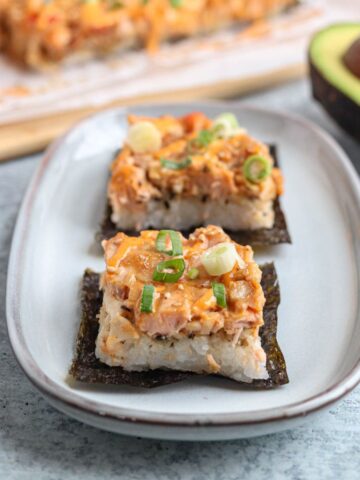

Nicole Kendrick says
This is one of the best aioli recipes I've made. The Gochujang paste created an incredible flavor.
Kristin says
I had this at a Korean BBQ in New York with my boyfriend and we have been trying to find the recipe ever since. This is perfect!!
Liz says
I served this over roasted salmon and it was an easy and delicious way to make a gourmet dinner!
Cristina says
I tried making this Gochujang Aioli, and it was a game-changer! The spicy kick adds such a great flavor to everything.
Bernice says
This gochujang aioli is a great way to pep up a sandwich and is perfect for shrimp or beef rice bowls. It's not a traditional sauce for bulgogi but it tastes amazing on any bulgogi bowl.
LW says
This was delicious with Buddah Bowls! Yum!